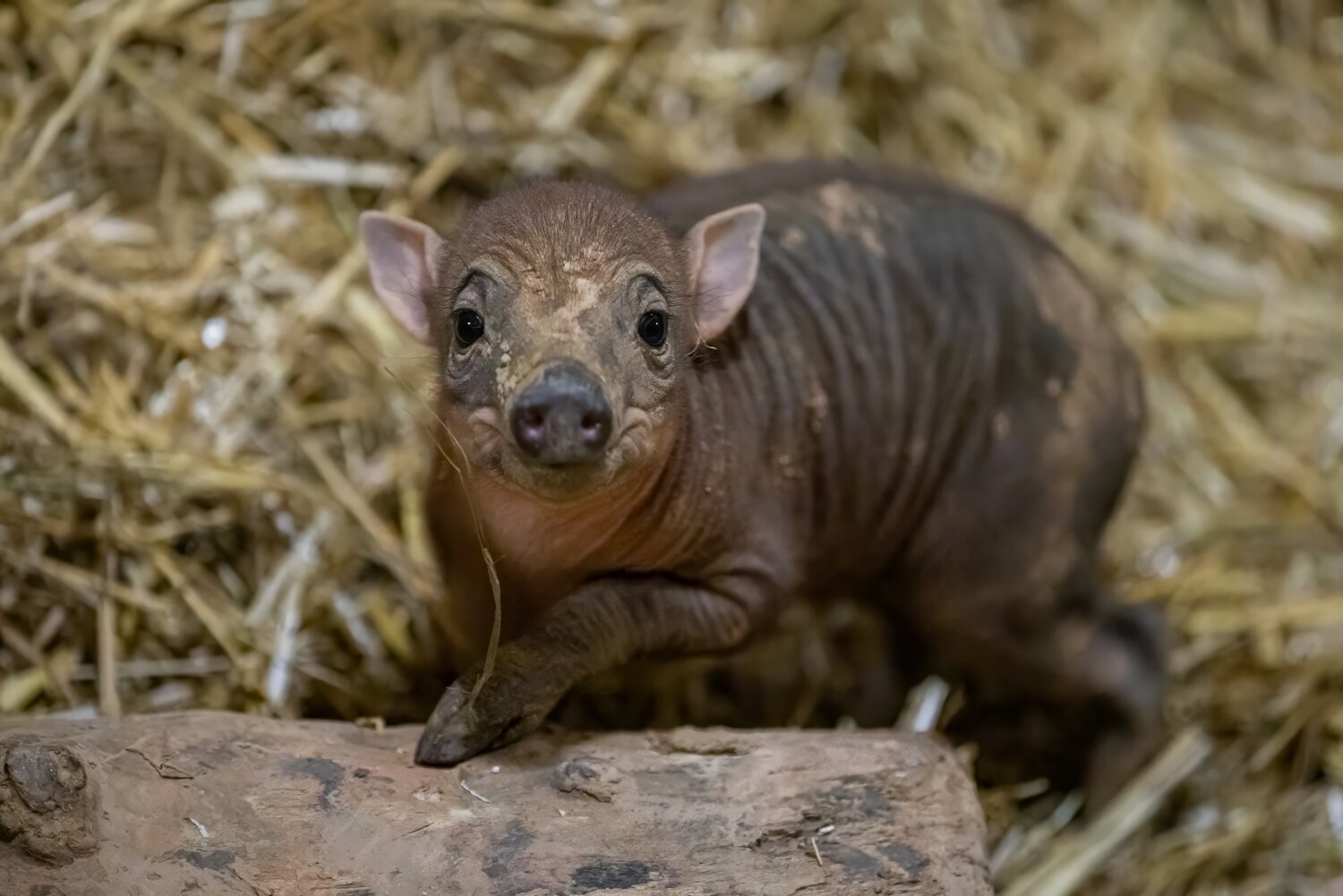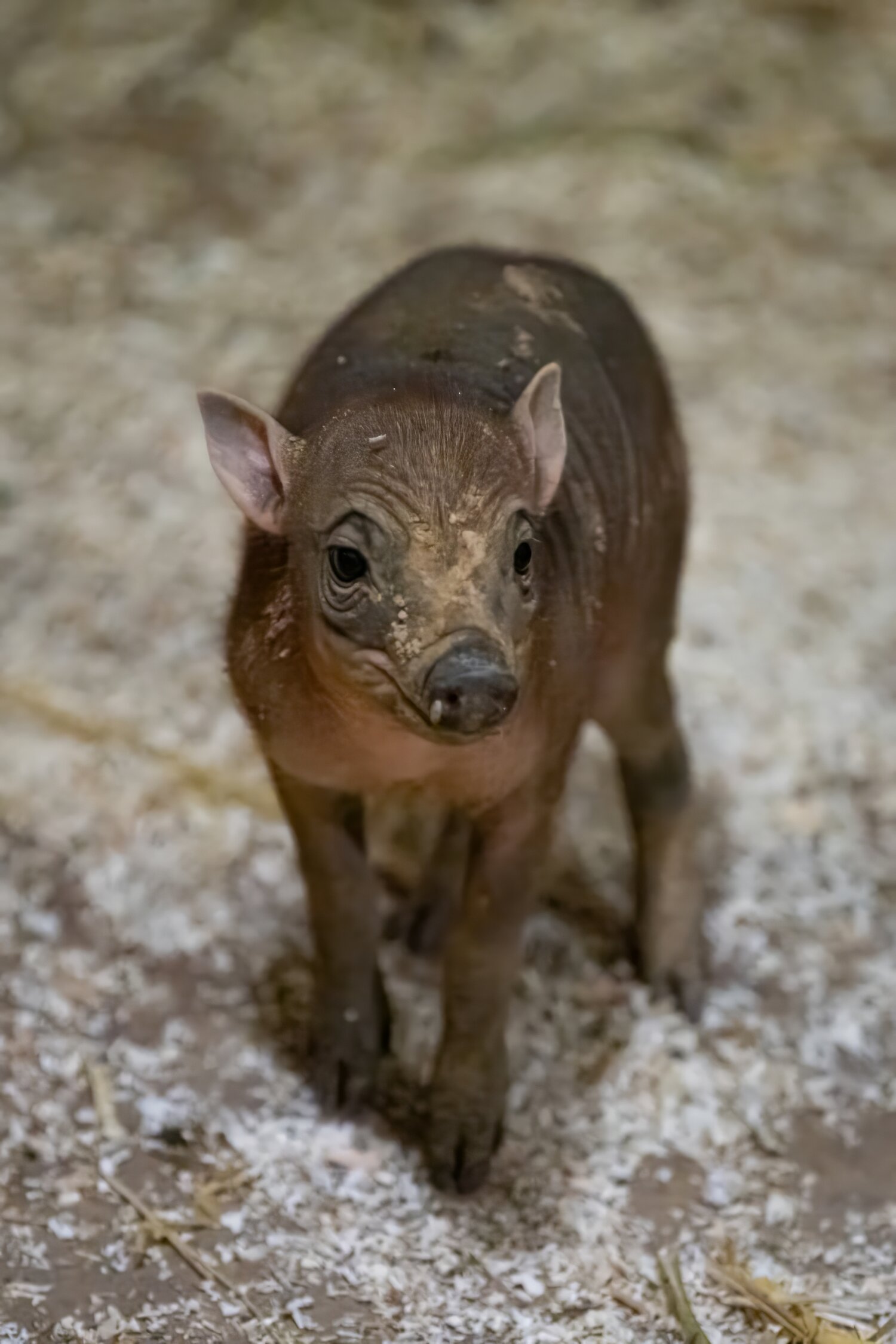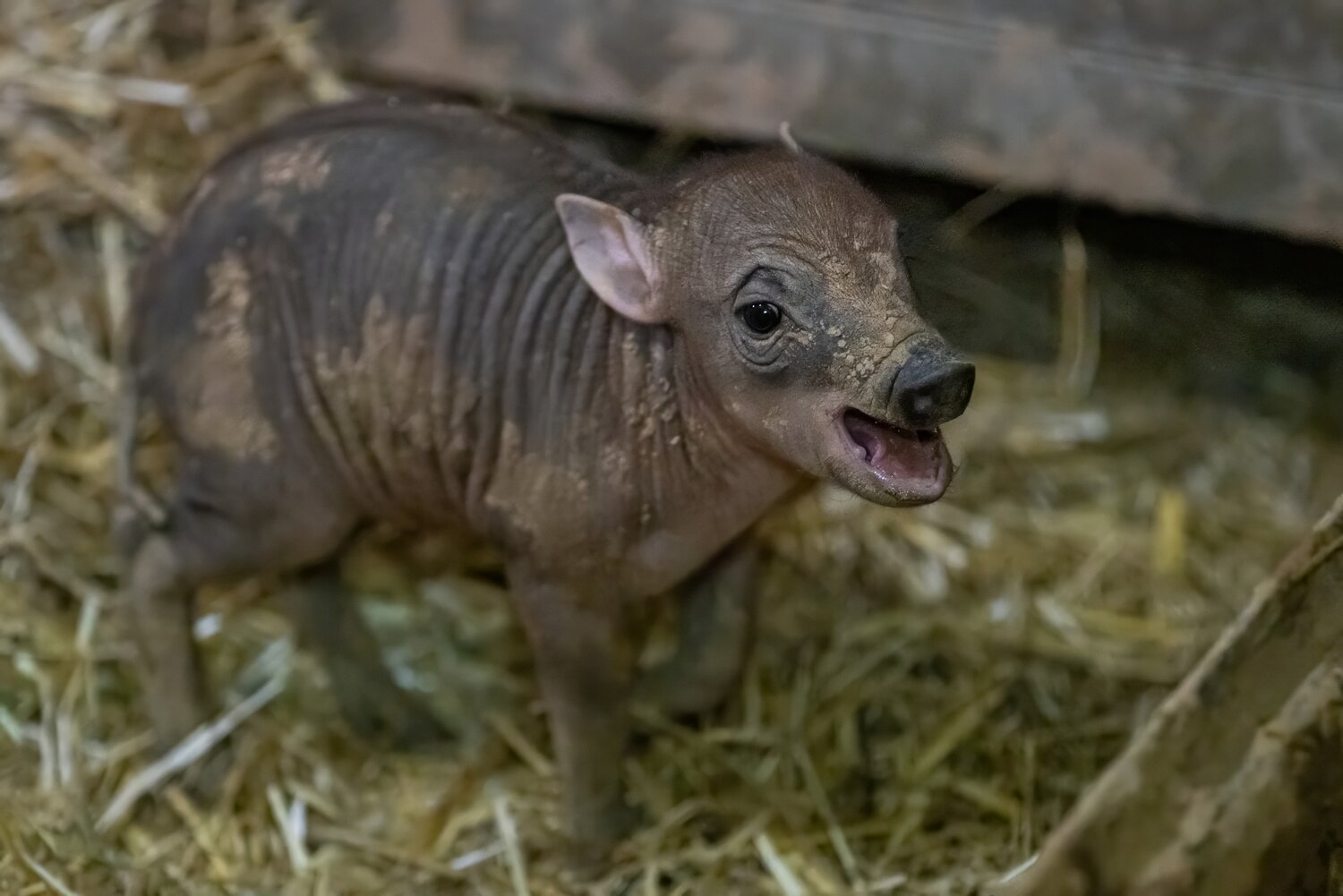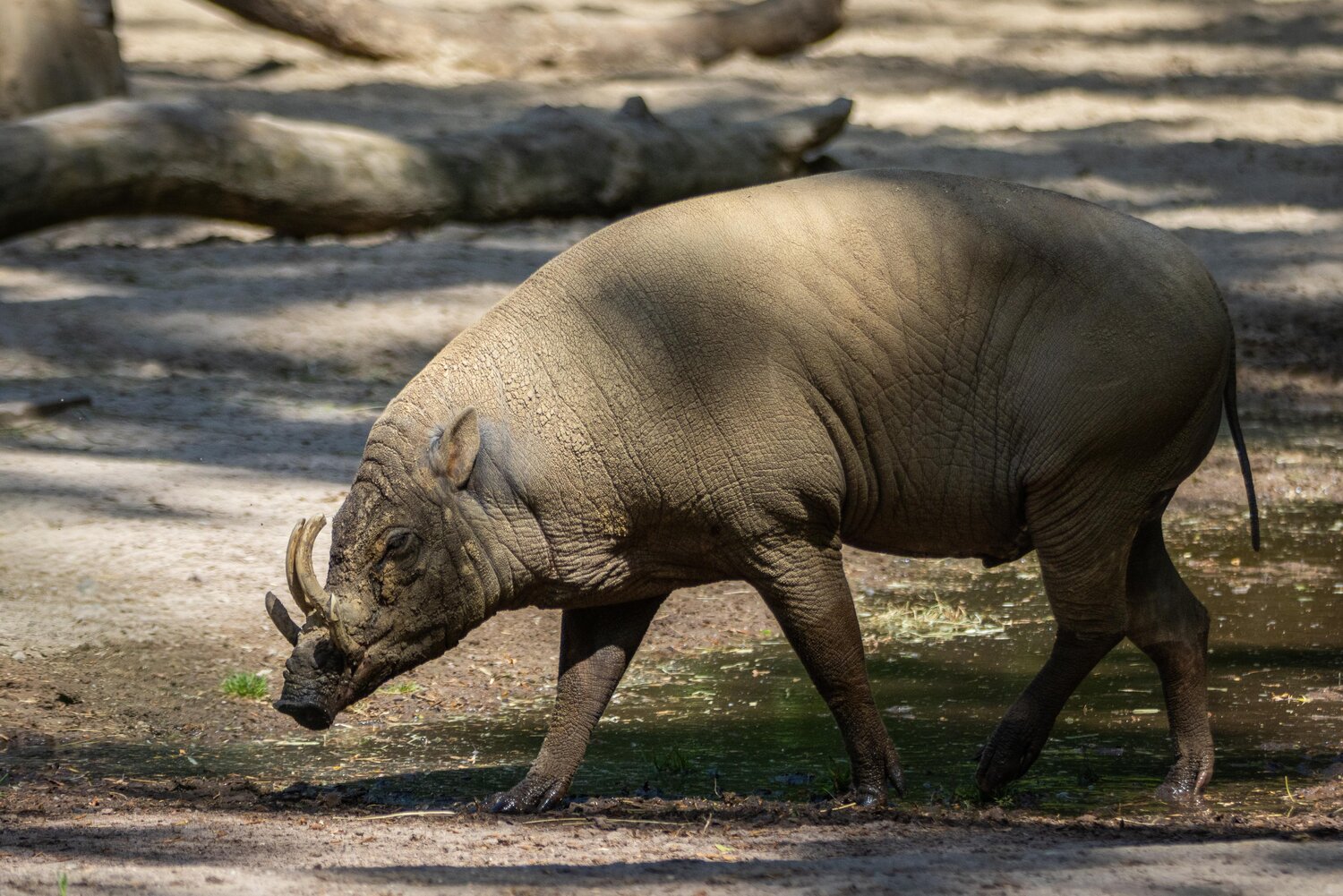With their hairless bodies and giant curved tusks that penetrate the top of the snout and grow up towards the forehead, babirusas could easily be taken for some kind of magical creature from the Fantastic Beasts film seriesif you couldn’t see them in the flesh at Tierpark Berlin. These curious swine may even have served as part of the inspiration for the mythical Qilin, which is said to bring harmony and happiness. And it was certainly a happy day for Tierpark Berlin when baby babirusa Ambari (a name meaning “sky”) was born here on 18 September.
Not only is Ambari the first baby born to mother Diah and father Cinta, she is also the first ever babirusa to be born at Tierpark Berlin. With her arrival, the Tierpark’s babirusa population has now risen to six. “Absolute peace and quiet with no disruptions are crucial for a successful babirusa birth,” says curator Maren Siebert. “The closer pregnant females get to their delivery date, the more wary they become of strangers. However, we were lucky enough to be able to follow the birth on camera without disturbing Diah and her baby. That isn’t only helpful for the successful rearing of the young babirusa, it also enabled the whole team to witness a truly moving moment.” The new mum is taking excellent care of her little one. Dad will get to know his daughter later on, but in the wild, too, it is babirusa mums who take charge of rearing their young. The animals live in groups of mothers and their offspring that may or may not include boars. These groups have up to 13 members.
Babirusas are a rare sight in European zoos. Berlin has always been at the forefront in the keeping and rearing of this unusual species. The first babirusa ever born in Germany came into the world at Zoo Berlin in 1905. In 1978, the Zoo’s first babirusa pair since WWII came to Berlin from Antwerp, and more piglets were subsequently born. The Zoo has welcomed several young babirusas since then, and now the Tierpark has experienced its very own babirusa birth, too.
Zoo and Tierpark Director Dr Andreas Knieriem is fascinated by babirusas and the unique ecosystem of their home in the wild: “Babirusas are wonderful ambassadors for the special flora and fauna found on the Indonesian island of Sulawesi. Their unusual appearance attracts attention, and we want to take advantage of that to make people aware of the threat currently facing the remarkable biodiversity of Sulawesi. As an other-worldly ‘fantastic beast’, the babirusa represents the numerous hidden biological treasures that exist in tropical island paradises.”
Background: Sulawesi
Animals and plants that occur only in a single place are called “endemic”. Babirusas are found exclusively on Sulawesi and some of its offshore islands. Despite being strictly protected in their homeland, babirusas are still threatened by poaching and habitat destruction. The 62,000-hectare Nantu Forest is one of the last contiguous areas of rainforest in Sulawesi and one of very few places where the threatened babirusa finds refuge. This precious ecosystem is also home to numerous other species of animals and plants, including many that are endemic and some that have yet to be scientifically described. That is why Tierpark Berlin supports the systematic research and recording of previously undocumented species as part of its Berlin World Wild conservation programme.



